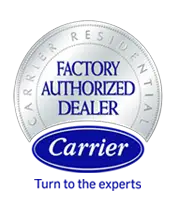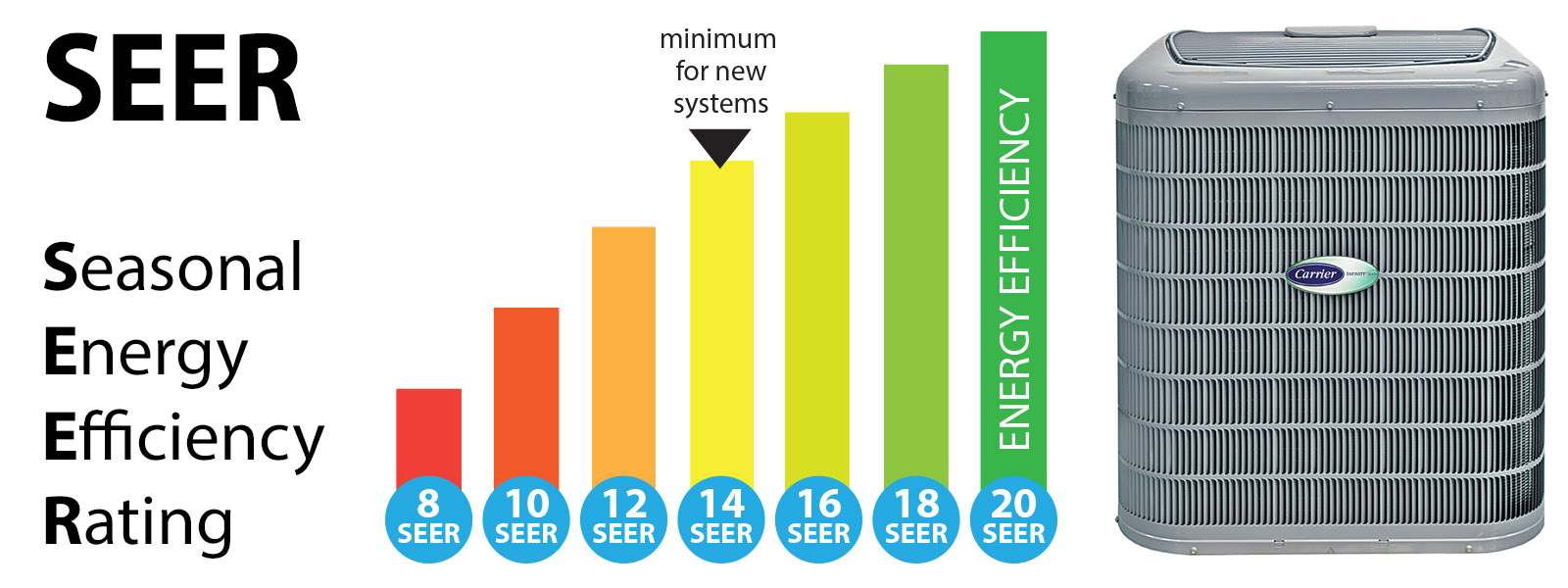 What is SEER?
What is SEER?
If you have done any research on HVAC systems, you’ve probably heard about SEER numbers. SEER is an rating system that’s designed to give you a quick and easy way to compare the energy efficiency of systems. It’s also the efficiency rating that has federal requirements. SEER stands for Seasonal Energy Efficiency Ratio. The number is generated from a formula that compares how much cool air is produced and how much energy is used. The higher the number, the more efficient the system is, and the less electricity it uses to run.
What about other efficiency ratings?
SEER is just one of several efficiency ratings that can be used to compare air conditioning systems. But it’s the one that has minimum requirements by federal law. It’s also the simplest to understand and use for comparison. At Carolina Air, we can provide you with the SEER number as well as the EER number and the HSPF number for the systems we offer.
What are the minimum requirements?
The first SEER requirements were set by the government in 1992. At that time, a SEER rating of 10 was the minimum. Since then, the minimum requirements have been increasing over time. Currently, for those living in Beaufort, South Carolina and the surrounding Lowcounty, the minimum SEER rating for a new system is 14.
What is the maximum efficiency?
The highest efficiencies are achieved by ground source, or geothermal systems. These can be up to 75 SEER! Ductless systems are also very efficient, with ratings over 30. However, most homes in our area use a central system with air ducts, and these can achieve a maximum rating in the low 20s. At Carolina Air, Inc., we install air conditioners and heat pumps that achieve ratings from the minimum of 14 to over 20 SEER.
What’s the SEER of my existing system?
The rating of your existing system depends upon when it was first installed, and how well it has been maintained. Units installed after 1992 were required to have a SEER rating of 10. For systems installed after 2006, the minimum was 13. After 2015, the minimum for the Southeast is 14. However, the efficiency of any system tends to degrade over time. A well maintained system can run almost as efficiently as when it is first installed. If your system is older than 5-10 years, it’s rating is likely lower now than when it was new. For systems that have not had regular service, the SEER can be significantly lower.
How much can I save with a higher rating?
The total amount of savings depends upon multiple factors, but it can be very significant. The cost of electricity, the size of the system – as well as the SEER rating – contribute to how much energy you use, and how much you can save. To give you an idea, if you replace an older system (with a rating of 9) with a new system (with a rating of 14), you can save around 36% in energy used for heating and cooling. If you replaced that old system with an even more efficient new system (with a rating of 20+), you can save around 50% or more.
What other benefits are there for a high efficiency system?
Higher SEER will not only save you in energy costs, but it will likely also provide several other benefits. Many higher efficiency systems use multi-speed speed compressors and blowers. These can help reduce humidity in your home as well as keep the temperature more consistent throughout your house – and both will improve your overall comfort! In addition, higher efficiency means the system is using less energy and emitting less harmful greenhouse gases.
Call Carolina Air (843) 524-2581 to learn more about SEER ratings on our new systems.






 What is SEER?
What is SEER?